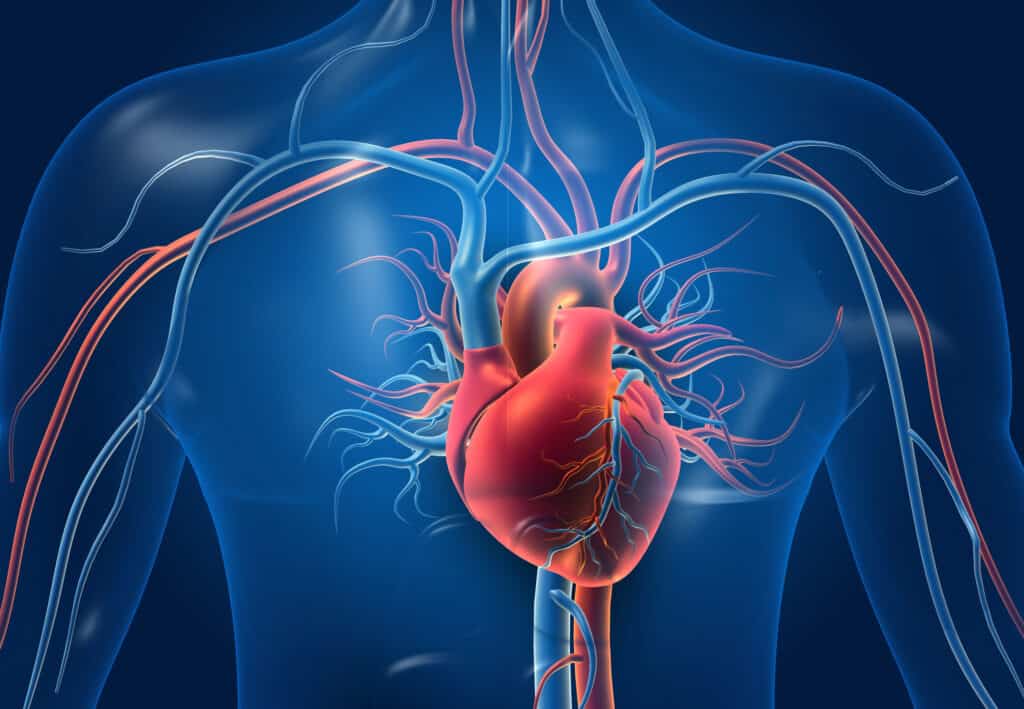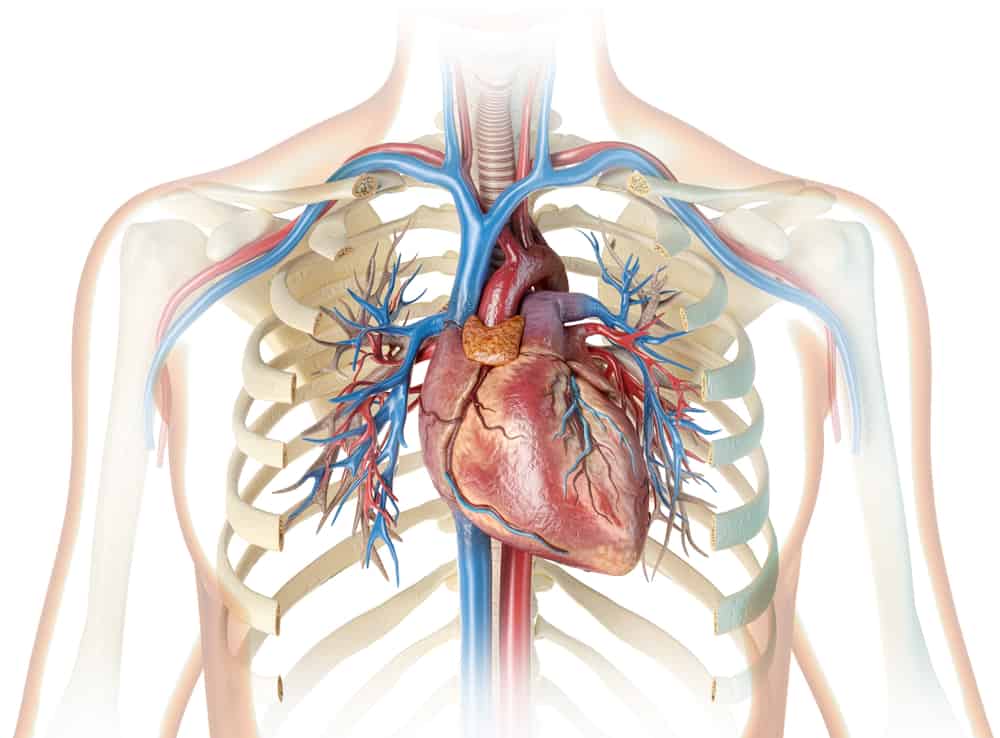Your body needs a functional and healthy cardiovascular system. One of the most prevalent health issues people face is high blood pressure. The body’s arteries are impacted by the prevalent condition of high blood pressure, also known as hypertension.
When you have high blood pressure, the blood’s constant strain against the artery walls is excessive. Pumping blood requires more effort from the heart. Blood pressure readings use units of millimeters of mercury are used to measure blood pressure (mm Hg).
High blood pressure raises the danger of coronary artery disease, stroke, and other major health issues if left untreated. From the age of 18, it’s critical to monitor your blood pressure at least once every two years.
Let’s learn more about cardiovascular health and the highest blood pressure ever recorded in patients.
Blood Pressure Categories

The highest blood pressure ever recorded may surprise you.
©Explode/Shutterstock.com
Below is a description of the five blood pressure (BP) levels that the American Heart Association considers acceptable.
Normal
Blood pressure readings less than 120/80 mm Hg are considered normal. If your blood pressure readings fall within this category, keep up heart-healthy routines like eating a well-rounded diet and exercising frequently.
Elevated
When readings are consistently between 120 and 129 systolic and fewer than 80 mm Hg diastolic, doctors consider this elevated blood pressure. Unless action is taken to manage the condition, those with raised blood pressure are susceptible to getting high blood pressure.
Hypertension Stage 1
Blood pressure that continuously falls between 80 and 89 mm Hg diastolic and 130 to 139 systolic is called Stage 1 hypertension. Depending on your likelihood of atherosclerotic cardiovascular disease (ASCVD), like a heart attack or fatal stroke, physicians might suggest lifestyle adjustments at this high blood pressure level with the help of medication designed for lowering blood pressure.
Hypertension State 2
When blood pressure continuously varies at 140/90 mm Hg or higher, hypertension is said to be in Stage 2. Specialists are most likely to suggest a mix of blood pressure drugs and lifestyle adjustments at this level of high blood pressure.
Hypertensive Crisis
Medical intervention is necessary for high blood pressure at this point. If your results randomly exceed 180/120 mm Hg, wait five minutes before taking another reading. See your doctor right away if your levels are still abnormally high. You might be going through a hypertensive emergency.
Individuals shouldn’t wait to see if their blood pressure lowers on its own. If it is higher than 180/120 mm Hg and you have symptoms that could indicate organ damage, including chest pain, breathing difficulties, back pain, numbness or weakness, changes in vision, or trouble speaking. Call 911 and get the medical help you need.
How Serious is Blood Pressure Over 300?
Elevated blood pressure heightens the risk of experiencing a stroke and strokes are very serious! If a reading reaches 180/120 millimeters of mercury (mmHg) or higher, it necessitates immediate medical attention. Effectively managing blood pressure is a crucial measure to help mitigate the risk of stroke.
Increased blood pressure is characterized by a systolic pressure ranging from 120 to 129, accompanied by a diastolic pressure below 80.
Elevated blood pressure can significantly impact:
- The cardiovascular system: High blood pressure may lead to arterial hardening, elevating the risk of blockages.
- The heart: Such blockages can decrease blood flow to the heart, heightening the risk of angina, heart failure, or a heart attack.
Highest Blood Pressure on Record

Both patients and doctors have shared their stories of the highest blood pressure ever recorded.
©Matis75/Shutterstock.com
There are various results when searching for the highest blood pressure ever recorded, making it hard to know which is accurate. During the research phase of this article, we stumbled upon several stories from nurses, doctors, and other medical professionals stating the highest blood pressure they’ve ever seen a patient have.
One person was in the intensive care unit with idiopathic heart failure, kidney failure, pneumonia, and water in the lungs. They said, “I had my blood pressure measured at 340. Apparently, the consultant told my wife that that was the highest bp he has measured on somebody that went on to survive.”
Thankfully, this individual is back to work and leading a healthier lifestyle. Another person wrote, “When I worked ICU a number of years ago, a patient had a BP of 260/140, hypertensive crisis. He was asymptomatic and was discharged a week later.”
Somebody writes a cheeky comment highlighting their experience with high blood pressure. They say, “My personal best was 260/140 when I had my last stroke. I was impressed with that & never want to see it again!” We hope you never see those numbers again, either!
Symptoms of High Blood Pressure
A “silent killer,” high blood pressure is generally symptomless. If you ignore your blood pressure in the expectation that some other symptom or sign would alert you to a problem, you are at risk of jeopardizing your life.
Although it’s relatively symptomless, there are some things that you may want to pay attention to that may call for a blood pressure check.
Facial Flushing
Whenever the blood vessels in the face enlarge, it causes facial flushing. It might happen suddenly or due to specific triggers, including spending time in the sun, winter weather, spicy foods, high winds, hot drinks, and skin-care products.
Working out, alcohol use, heat exposure, hot water exposure, mental stress, and facial flushing can all briefly boost blood pressure. Having elevated blood pressure may produce face flushing.
Dizziness
Although some blood pressure drugs may cause dizziness as a side effect, high blood pressure does not necessarily cause it. In fact, dizziness is often a sign of low blood pressure.
But dizziness shouldn’t be ignored if it suddenly arises. Severe dizziness, diminished balance or dexterity, and impaired coordination are all stroke warning signs. High blood pressure is a significant risk factor for stroke.
Getting a Blood Pressure Reading

A blood pressure cuff lets doctors measure your blood pressure, but some hypertension patients also test at hhome.
©Marian Fil/Shutterstock.com
Your healthcare professional will need to use a blood pressure cuff to measure your blood pressure because high blood pressure doesn’t have any symptoms. Physicians often take your blood pressure and weight at every yearly checkup. Your doctor may diagnose you with high blood pressure if you have repeat high pressure readings at your appointments.
It’s also not uncommon for healthcare professionals to suggest patients get a cuff at home to test for themselves. This is often done for those diagnosed with hypertension.
Can Diet Help Lower Blood Pressure?

Healthy and nutritious foods in your diet help with blood pressure.
©Marie Sonmez Photography/Shutterstock.com
Although age, race, and hereditary conditions play a role in blood pressure, your diet is crucial. Lowering your sodium intake is key to lowering your blood pressure. Consume low-fat, low-sodium, and low-calorie foods, such as skim or 1% milk, fresh produce, whole-grain rice, and pasta.
Watch Your Salt Intake
Just because you’re aiming for less sodium doesn’t mean your food has to be tasteless. Implement herbs, spices, and flavorings to give food a taste without adding salt. Aiming for less than 1,500 milligrams of sodium daily is the ideal salt intake recommendation.
Remember that many processed meals, particularly fast foods, and several frozen and restaurant foods have high salt content. Utilize salt-free herbs and spices in dishes to enhance your food. Avoid adding salt at the dinner table as well.
Increase Potassium
Check with your doctor to see whether you need to up your potassium intake. With your doctor, talk about the DASH diet (Dietary Approaches to Stop Hypertension). The DASH diet places an emphasis on increasing your intake of fruits, veggies, and whole grains while lowering your sodium intake.
The DASH diet simplifies eating less salt and sodium since it is abundant in vegetables and fruits, which are generally lower in sodium than numerous other foods. It is crucial that you talk with your provider first. Too much potassium can be incredibly dangerous, and you’ll never want to take supplements without medical supervision.
Keep a Healthy Weight
Maintaining a healthy weight goes hand in hand with following a proper diet. Becoming overweight raises blood pressure, therefore decreasing excess weight through diet and exercise will assist in bringing it down to more healthy ranges. Walking is a simple exercise that might help you lose weight and lower your blood pressure.
Bottom Line
You generally won’t feel any difference after receiving a high blood pressure diagnosis because the condition doesn’t initially generate many symptoms. Nonetheless, adhering to your doctor’s advice is crucial to lowering your blood pressure and preventing catastrophic problems later in life.
You could become gravely ill if you don’t manage your high blood pressure. You can control your blood pressure if you take your doctor’s prescribed medications. A good diet and regular exercise can both lower blood pressure.
We hope you never see high numbers like those who fall into the patients with the highest blood pressure ever recorded readings. Take care, and remember to call 911 for a medical emergency.
The photo featured at the top of this post is © Matis75/Shutterstock.com
Thank you for reading! Have some feedback for us? Contact the AZ Animals editorial team.






